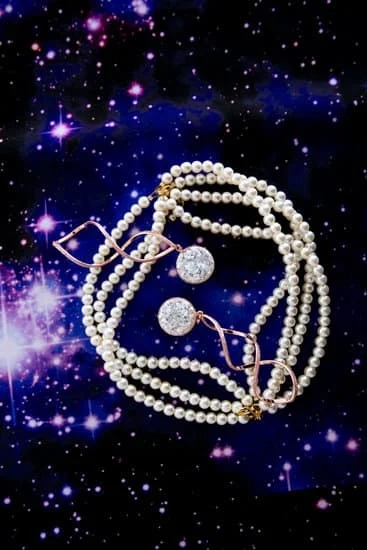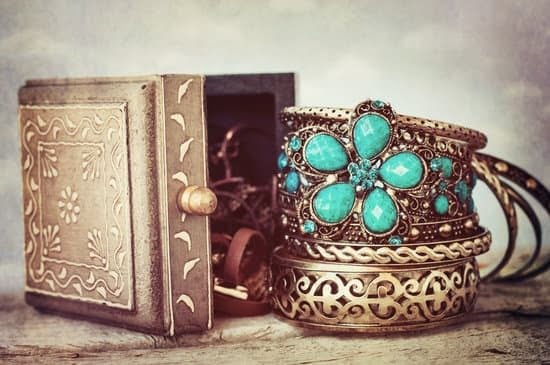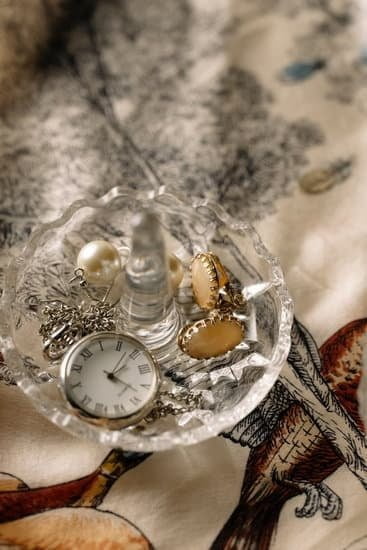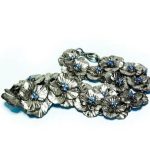Are you interested in learning how to get started in fine jewelry making? Whether you have a passion for creating beautiful pieces or want to start a business, diving into the world of fine jewelry making can be an exciting and rewarding journey.
In this article, we will explore the essential tools, techniques, materials, and resources you need to begin your venture into the world of fine jewelry making. From basic techniques for beginners to tips for marketing and selling your handmade pieces, you’ll find everything you need to kickstart your jewelry making journey.
To embark on the path of fine jewelry making, it’s important to familiarize yourself with the necessary tools and materials. We’ll discuss everything from pliers and wire cutters to gemstones and metals so that you can start building your collection and workspace. Additionally, we’ll delve into basic jewelry making techniques tailored for beginners, offering step-by-step guidance on how to create your first fine jewelry piece.
Furthermore, choosing the right gemstones and metals is paramount in creating stunning pieces that reflect your unique style. You’ll discover valuable insights on designing your first fine jewelry piece and learn about the importance of quality craftsmanship in turning raw materials into timeless treasures. As we unravel the intricacies of fine jewelry making, we aim to equip you with the knowledge and skills needed to bring your creative vision to life through exquisite handcrafted jewelry.
Necessary Tools and Materials for Fine Jewelry Making
When starting your journey in fine jewelry making, it is essential to have the necessary tools and materials to create stunning pieces of jewelry. The tools you will need may vary depending on the specific techniques and designs you choose to work with, but there are some basic tools that every jewelry maker should have in their arsenal.
Some of these fundamental tools include pliers, wire cutters, a jeweler’s saw, a bench block, files, and a soldering torch. These tools will allow you to manipulate metal, shape wires, and set gemstones to create your desired designs.
In addition to the tools mentioned above, you will also need various materials to bring your jewelry designs to life. Metals such as gold, silver, and platinum are commonly used in fine jewelry making due to their durability and aesthetic appeal. Gemstones such as diamonds, rubies, sapphires, and emeralds can add color and sparkle to your creations. Other materials such as clasps, jump rings, chains, and findings are also essential for assembling your jewelry pieces.
As you begin your journey into fine jewelry making, investing in high-quality tools and materials is crucial for creating professional-looking pieces. While it may be tempting to opt for less expensive supplies when starting out, choosing quality over cost will ultimately lead to better results in your finished pieces. It is important to do thorough research on the best suppliers for metals and gemstones to ensure that you are working with authentic materials of superior quality.
Aspiring jewelry makers should take the time to understand the functions of each tool and learn how different metals and gemstones behave during the crafting process. Acquiring knowledge about the properties of different materials will help you make informed decisions when selecting tools and materials for specific projects. Consider taking classes or workshops focused on jewelry making techniques so that you can gain hands-on experience using various tools and working with different materials.
Basic Jewelry Making Techniques for Beginners
If you’re interested in getting started in fine jewelry making, there are several basic techniques you’ll need to learn in order to create beautiful and professionally finished pieces. Here are some essential techniques for beginners:
1. Soldering: Soldering is a fundamental skill in jewelry making that involves using a torch to join metal components together. Learning how to solder will allow you to create sturdy and long-lasting connections in your jewelry designs.
2. Wire Wrapping: This technique involves using thin wire to secure beads, gemstones, or other components together. It’s a versatile technique that can be used to create intricate and delicate designs.
3. Metal Stamping: Metal stamping is a great way to add personalized touches to your jewelry pieces. With the right tools and techniques, you can easily create unique and customized designs on metal surfaces.
Learning these basic jewelry making techniques will provide you with a solid foundation for creating your own stunning fine jewelry pieces. Practice and patience are key when mastering these skills, so don’t be discouraged if it takes time to perfect your craft.
In addition to these techniques, it is important for beginners to also familiarize themselves with the different types of jewelry making tools and materials available in the market. Understanding the function of each tool and how they are used in conjunction with one another is crucial for successful jewelry making.
Remember, practice makes perfect when it comes to fine jewelry making, so don’t be afraid to experiment with different techniques and materials as you continue on your jewelry making journey. With dedication and perseverance, you’ll be creating exquisite handmade jewelry pieces in no time.
Choosing the Right Gemstones and Metals for Your Jewelry
When it comes to creating fine jewelry, choosing the right gemstones and metals is crucial in determining the overall quality and aesthetic of your piece. Whether you’re a beginner or an experienced jewelry maker, understanding the different options available and how to properly combine them is essential for success in this craft.
Understanding Gemstones and Metals
Gemstones come in a wide variety of colors, shapes, and sizes, each with its own unique properties and characteristics. From diamonds and sapphires to emeralds and rubies, the options are endless. Similarly, different metals such as gold, silver, platinum, and titanium offer varying levels of durability, shine, and cost. Learning about the quality grading systems for gemstones and metals will help you make informed decisions when selecting materials for your jewelry pieces.
Matching Gemstones With Metals
One important aspect of fine jewelry making is understanding how to match gemstones with the right metals for optimal visual appeal and wearability. For example, pairing a delicate pearl with a yellow gold setting can create a classic and elegant look. On the other hand, choosing a bold ruby set in white gold or platinum can give off a modern and luxurious vibe. Understanding these combinations will allow you to design pieces that appeal to different tastes and styles.
Sourcing High-Quality Materials
Once you have an idea of the types of gemstones and metals you’d like to work with in your designs, it’s important to source high-quality materials from reputable suppliers. Look for trusted dealers who can provide certified gemstones and pure metals to ensure the authenticity and value of your finished jewelry pieces. Building strong relationships with suppliers can also help you access unique or limited-edition materials for your creations.
Now that we understand more about how to choose the right gemstones and metals for our jewelry creations let’s move on to.
Designing Your First Fine Jewelry Piece
Once you have familiarized yourself with the necessary tools and materials for fine jewelry making, it’s time to channel your creativity into designing your first piece. Whether you are creating a custom engagement ring, a delicate pendant, or a pair of statement earrings, the design phase is crucial in translating your vision into a tangible and beautiful piece of jewelry. Here are some steps to help you get started on designing your first fine jewelry piece:
1. Inspiration: Begin by finding inspiration for your design. Explore different styles, trends, and techniques through research and by studying the work of renowned jewelry designers. You can also draw inspiration from nature, architecture, art, or personal experiences.
2. Sketching: Once you have gathered inspiration, start sketching out your ideas on paper or using digital design software. Take your time to experiment with different shapes, forms, and details to bring your vision to life.
3. Material Selection: Consider the gemstones and metals that will best complement your design. Think about color combinations, textures, and durability when choosing materials for your jewelry piece.
Remember that designing fine jewelry takes time and practice. Don’t be afraid to experiment with different designs and techniques until you find what resonates with you the most.
As you move forward in this exciting journey of fine jewelry making, keep in mind that patience and perseverance are key traits when starting out in this craft. Each new piece you create will be a learning opportunity and a chance to refine your skills as a jewelry artisan. With dedication and continuous learning, you’ll gradually develop the expertise needed to create stunning pieces that reflect both quality craftsmanship and artistic expression.
Understanding the Importance of Jewelry Making Quality and Craftsmanship
The quality and craftsmanship of fine jewelry are essential to creating pieces that will stand the test of time and be treasured for generations to come. Fine jewelry making is an intricate art form that requires attention to detail and precision in every step of the process. Understanding the importance of quality and craftsmanship in jewelry making is crucial for anyone looking to start their journey in this field.
To get started in fine jewelry making, it’s important to invest in high-quality tools and materials. This includes investing in metals such as gold, silver, or platinum, as well as genuine gemstones like diamonds, rubies, emeralds, and sapphires. Working with top-notch materials will ensure that your jewelry pieces are not only aesthetically pleasing but also durable and long-lasting.
Another key aspect of ensuring quality and craftsmanship in fine jewelry making is mastering basic techniques such as soldering, stone setting, polishing, and finishing. These techniques require practice and patience to perfect, but they are crucial for creating well-crafted pieces. Additionally, paying attention to details such as symmetry, balance, and precision in your designs will elevate the quality of your work.
Finally, seeking out resources for learning and improving your skills is essential for honing your craft. Consider enrolling in jewelry making classes or workshops, finding a mentor in the industry, or joining online communities where you can learn from experienced professionals. Continuous learning and improvement are key to achieving excellence in fine jewelry making.
| Tools | Materials |
|---|---|
| Soldering iron | Gold |
| Jeweler’s saw | Silver |
| Gemstone setting pliers | Diamonds |
| Polishing machine | Rubies |
Resources for Learning and Improving Your Jewelry Making Skills
For beginners who are interested in learning how to get started in fine jewelry making, there are various resources available to help you improve your skills and knowledge in this craft. One of the best ways to learn is by taking classes or workshops from experienced jewelry makers. Many community colleges, art centers, and craft stores offer beginner courses in jewelry making that cover the basics of design, techniques, and materials.
In addition to formal classes, there are countless online tutorials, videos, and forums dedicated to jewelry making where you can find valuable tips, tricks, and guidance from fellow artisans. Websites such as YouTube and Etsy have a wealth of free tutorials on everything from wire wrapping to stone setting.
Joining online communities or social media groups also gives you access to a supportive network of like-minded individuals who can provide feedback on your work and offer advice on how to elevate your skills.
Furthermore, attending trade shows and jewelry-making events can expose you to new techniques and trends within the industry while also giving you the opportunity to network with other artists and suppliers. These events often feature demonstrations, workshops, and seminars that cater to both beginners and advanced jewelers. By actively seeking out these resources for learning, you can continually improve your craftsmanship and expand your knowledge of fine jewelry making.
| Resource Type | Benefits |
|---|---|
| Formal Classes/Workshops | Hands-on instruction from experienced jewelers |
| Online Tutorials/Videos | Access to a variety of free instructional content |
| Trade Shows/Events | Exposure to new techniques and networking opportunities |
Tips for Marketing and Selling Your Handmade Fine Jewelry
When it comes to selling your handmade fine jewelry, there are several tips and strategies that can help you succeed in the competitive market. One of the most important aspects of marketing and selling your jewelry is to create a strong brand identity.
This includes developing a unique style or signature design that sets your jewelry apart from others in the industry. By creating a cohesive brand image, you can attract a loyal customer base who appreciates and recognizes your work.
In addition to developing your brand identity, it’s important to utilize various marketing channels to showcase and sell your handmade fine jewelry. In today’s digital age, having a strong online presence is crucial for reaching a wider audience.
Consider creating an e-commerce website or utilizing online marketplaces such as Etsy or Amazon Handmade to sell your jewelry. Social media platforms like Instagram and Facebook can also be powerful tools for showcasing your work and connecting with potential customers.
Networking and collaborating with other artists and local businesses can also be beneficial for marketing and selling your handmade fine jewelry. Consider participating in craft fairs, pop-up markets, or art shows to gain exposure and connect with potential customers. Building relationships with other artists, designers, and influencers can also open up opportunities for collaborations or features that can expand your reach.
By focusing on developing a strong brand identity, utilizing various marketing channels, and networking within the artistic community, you can effectively market and sell your handmade fine jewelry. Keep in mind that establishing yourself in the industry may take time and persistence, but by staying true to your craft and continuously learning and improving, you can build a successful business as a fine jewelry maker.
Conclusion and Next Steps for Your Jewelry Making Journey
As you conclude your journey into the world of fine jewelry making, it is important to remember that the key to success lies in honing your skills, continuously learning, and staying updated with the latest trends and techniques. Whether you are just starting out or have been creating beautiful pieces for some time now, there is always room for growth and improvement.
By continually seeking out resources for learning and self-improvement, you can elevate your jewelry making to new levels of artistry and craftsmanship.
One way to continue advancing in your jewelry making journey is by seeking out mentorship from experienced artisans and professionals in the industry. Learning from their expertise can provide valuable insights and guidance as you refine your techniques and develop your unique style. Additionally, networking with other jewelry makers can offer support, inspiration, and opportunities for collaboration that can help propel your craft forward.
Finally, as you progress in your jewelry making endeavors, consider exploring opportunities to market and sell your handmade pieces. Platforms like craft fairs, artisan markets, online stores, and social media can all provide avenues to showcase and sell your creations. Embrace these opportunities to share your passion for fine jewelry making with others while also growing your brand as an artisan.
Remember that each piece you create tells a story – a story of dedication, creativity, skill, and love for the craft. And as you continue on this journey of discovery and mastery in fine jewelry making, may each piece you create be a testament to the beauty that comes from following one’s passion.
Frequently Asked Questions
How Do I Get Into the Fine Jewelry Industry?
Getting into the fine jewelry industry typically requires a combination of education, training, and experience. Many professionals start by obtaining a degree or certification in jewelry design, gemology, or metalsmithing. Networking and building relationships within the industry can also be beneficial for finding opportunities such as internships or apprenticeships with established jewelers.
Is Fine Jewelry Making Profitable?
Fine jewelry making can be profitable for those who are able to create high-quality, unique pieces and effectively market their products. However, it’s important to consider factors such as materials cost, production time, and market demand when determining the potential profitability of a jewelry-making venture.
What Experience Is Required to Get Into Fine Jewelry?
Experience required to get into the fine jewelry industry can vary based on one’s specific area of interest. For roles such as jewelry designer or metalsmith, formal education in jewelry design or metalworking may be preferred.
For roles related to sales and marketing within the industry, relevant experience in retail or luxury goods can be valuable. Building a strong portfolio of work or gaining firsthand experience through internships or apprenticeships can also help when entering the field of fine jewelry.

Welcome to my jewelry blog! My name is Sarah and I am the owner of this blog.
I love making jewelry and sharing my creations with others.
So whether you’re someone who loves wearing jewelry yourself or simply enjoys learning about it, be sure to check out my blog for insightful posts on everything related to this exciting topic!





